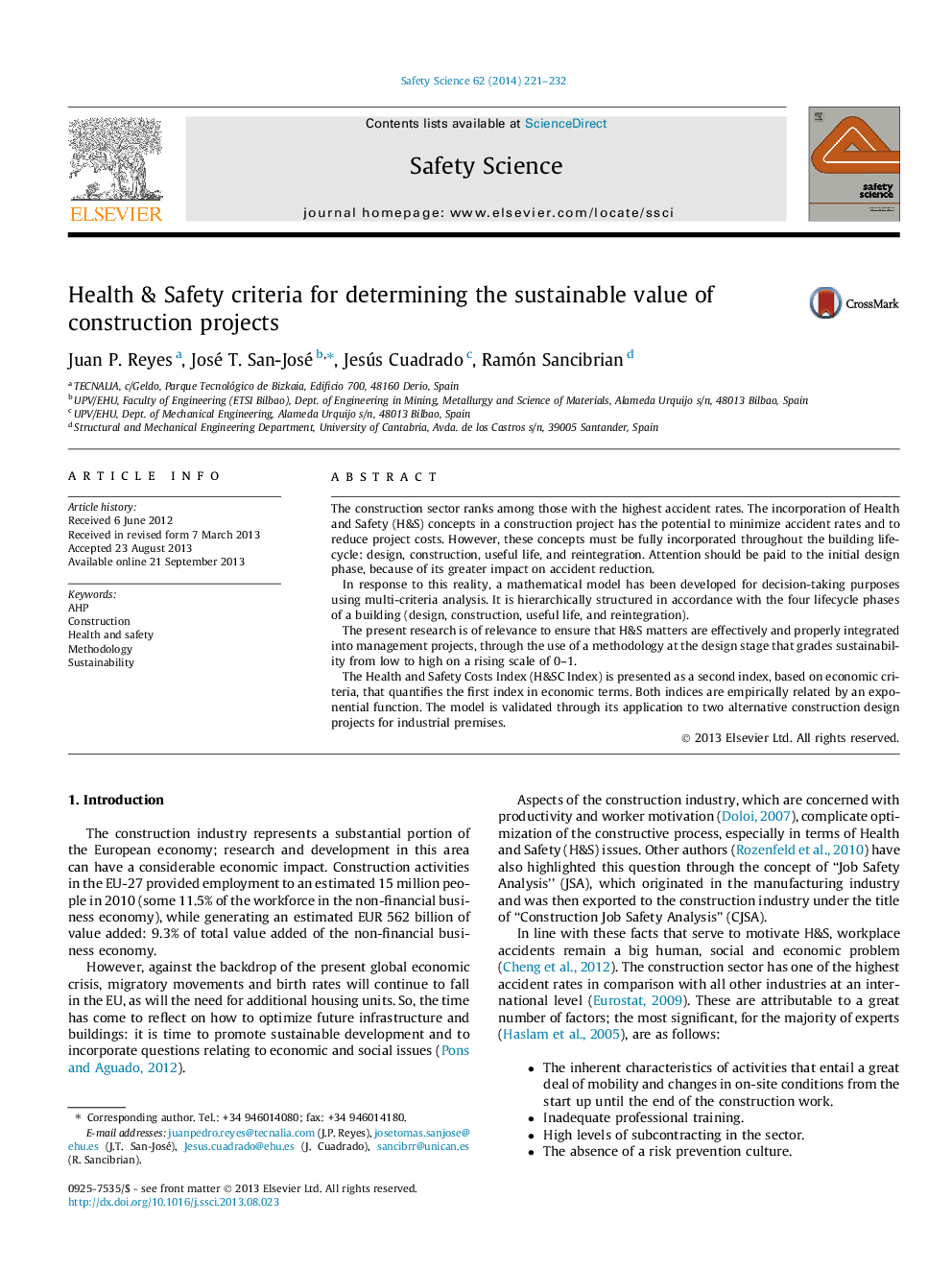| Article ID | Journal | Published Year | Pages | File Type |
|---|---|---|---|---|
| 589226 | Safety Science | 2014 | 12 Pages |
•Use the health and safety criteria in sustainable construction projects.•The use of a supporting methodology that grades the sustainability on a rising scale.•The development of a decision-making instrument for unifying criteria.•Assessing the consequences of the variations that may be fed into the model by decision-makers over the project’s life-cycle.•How could be selected the most sustainable project in terms of health and safety.
The construction sector ranks among those with the highest accident rates. The incorporation of Health and Safety (H&S) concepts in a construction project has the potential to minimize accident rates and to reduce project costs. However, these concepts must be fully incorporated throughout the building life-cycle: design, construction, useful life, and reintegration. Attention should be paid to the initial design phase, because of its greater impact on accident reduction.In response to this reality, a mathematical model has been developed for decision-taking purposes using multi-criteria analysis. It is hierarchically structured in accordance with the four lifecycle phases of a building (design, construction, useful life, and reintegration).The present research is of relevance to ensure that H&S matters are effectively and properly integrated into management projects, through the use of a methodology at the design stage that grades sustainability from low to high on a rising scale of 0–1.The Health and Safety Costs Index (H&SC Index) is presented as a second index, based on economic criteria, that quantifies the first index in economic terms. Both indices are empirically related by an exponential function. The model is validated through its application to two alternative construction design projects for industrial premises.
